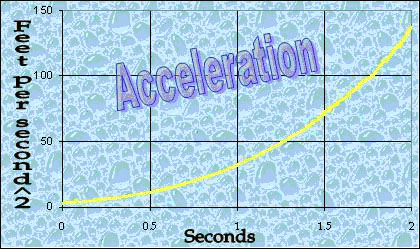To understand what Rayleigh-Taylor
Flow is, it is easiest to start with an example, something common.
Take a container filled with oil and water. The two liquids have
different densities
and the oil floats on top of the water. Now assume you started with the water on top of the oil and let them mix. What you would see
is a sinusoidal, or egg crate shape, pattern of waves forming
along the interface.
This pattern of the fluids mixing is known
as Rayleigh-Taylor flow (name to be explained later) and it is
highly complicated. Although mixing oil and water is fun to watch,
the specific combination of these two fluids doesn’t have
too many applications in real life. However, Rayleigh-Taylor flow
performs similarly in any combination of fluids or gases playing
a crucial role in nuclear fusion, supernovas, volcanoes, and even
simple weather patterns.
The basics of Rayleigh-Taylor flow is that
there is a heavy fluid moving into a light one, ie – water
moving into oil. As they mix, the interface changes due to a system
of vortices that occurs. If you zoom into the inflection point
of the sinusoids from a 2D point of view, you would see the following
reaction:
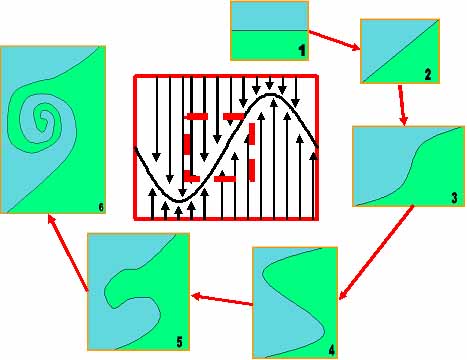
As you can see, as the fluids move into one another, a vortex
occurs at the inflection point. This vortex is caused because
of the frictional forces occurring due to the viscosity of the
fluids.
Over time, this vortex interacts with the
rest of the fluid and a “mushroom” effect occurs.
This process is hard to describe, but easy to show. The following
picture is courtesy of physicist Dr. Andrew Cook, physicist at
LLNL:
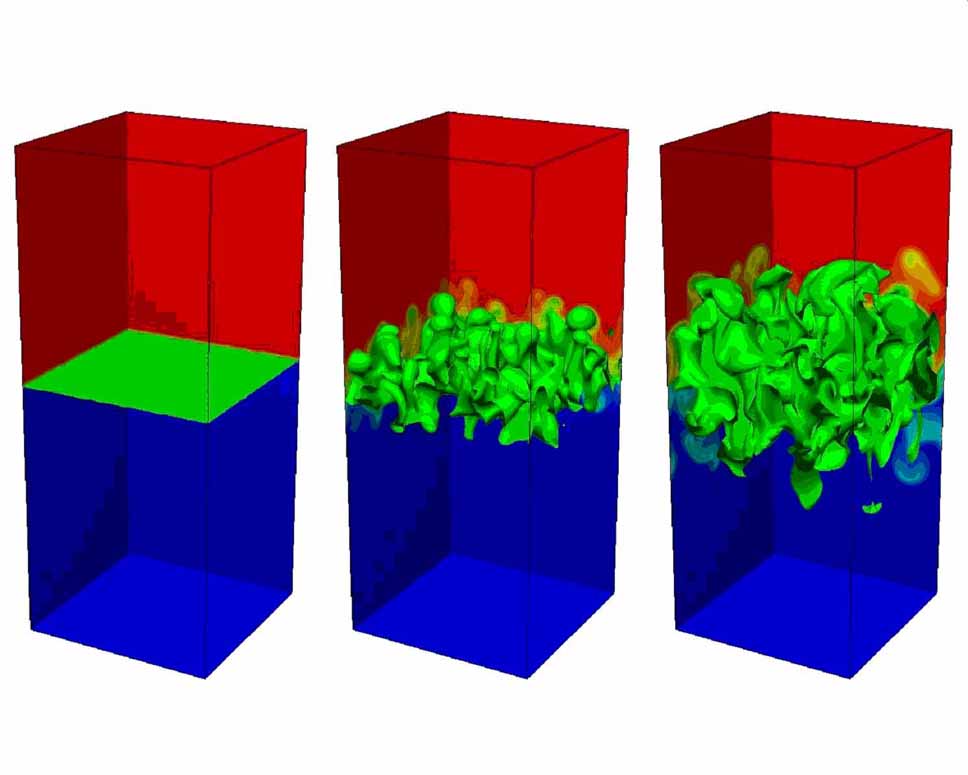
Dr. Cook created these images through CFD
modeling and uses them for his research in nuclear fusion.
In the 1880’s Lord
Rayleigh observed the two fluid mixture seen above and concluded
that it occurs due to the gravitational forces. In 1950 Sir
Geoffrey Taylor realized that it was not just forces due to
the effect of gravity, but all acceleration. Hence, the effect
took on the name “Rayleigh-Taylor flow” or “Rayleigh-Taylor
instability”.
Now, return back to our container with
water on top and oil on bottom. Because water is heavier than
oil, the water will fall, however in a zero gravity environment,
the fluids won’t move because there are no external forces
acting on them. Consider the following free body diagram:
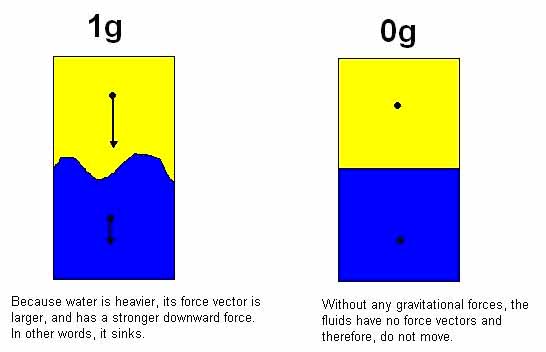
Sir Isaac Newton and his apple have shown
us that gravity makes things fall, likewise, without gravity,
things don’t fall. So go back to the oil/water container
in zero gravity. Now imagine you move this container straight
down in the direction of the arrow above. Because you’re
now moving the container down, the water moves to the top of the
container. In this case, you’re applying a negative g-force.
Depending on how fast you move the container, the Rayleigh-Taylor
flow will occur differently. Refer to the following diagram:
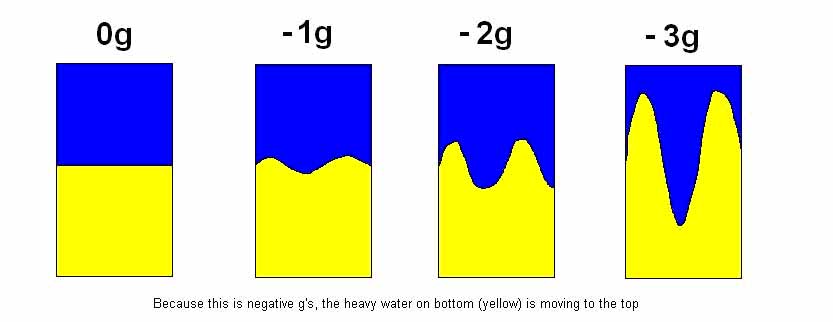
If you move the container really quickly,
the eddies will be large; if you move the container slowly, the
eddies will be small. The question is, how do you accelerate the
container so that you know exactly how large the eddies will be
after a certain amount of time? And then, once you know, how will
you control it?
Well, the first step of the process is
understanding how Rayleigh-Taylor flow works. The rate at which
you are moving the container can be transferred into an acceleration
profile. For instance, lets say you wanted to move the container
so that you create a force equal to gravity. Well, return to your
basic equations…..




First time seeing Newtonian physics? No
worries. Basically, Newton claimed that a force is mass times
acceleration:
Force=mass*acceleration
This means that the force is equal to gravity
is an objects mass times how fast it will fall. If you wanted
to create a force twice as much as gravity, accelerate the object
twice as fast. This is Newton’s 2nd Law, tell your teacher,
they’ll be impressed that you know. Do heavier objects fall
faster than light ones? Ask Mr. Galileo Galilei.
Now think about how things move….hmmm…tough
to explain….here’s a website!
SO, lets go back to the container. Assuming
you wanted to move it so that you created a force equal to gravity,
you would need to apply a constant, 1g force. The acceleration
profile associated with the constant 1g force is as follows:
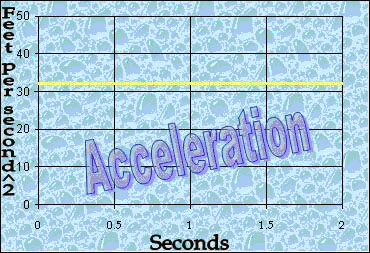
So, if this is the acceleration profile,
the velocity profile looks like this:
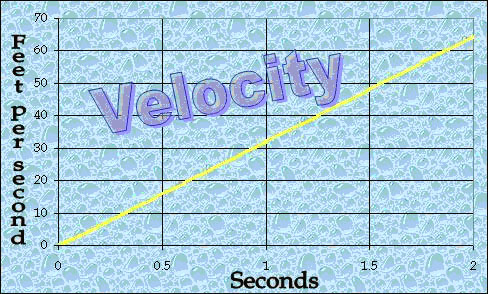
And its distance profile looks like this:
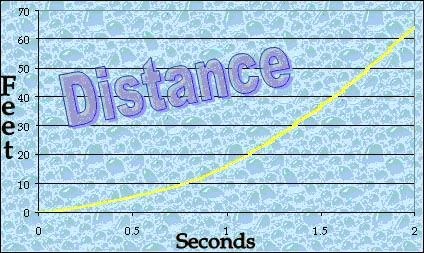
HAZAAH!! Newtonian physics!!
Now, just to make things complicated, we
(G-Dawgs) want to test an acceleration profile that looks
like this:
